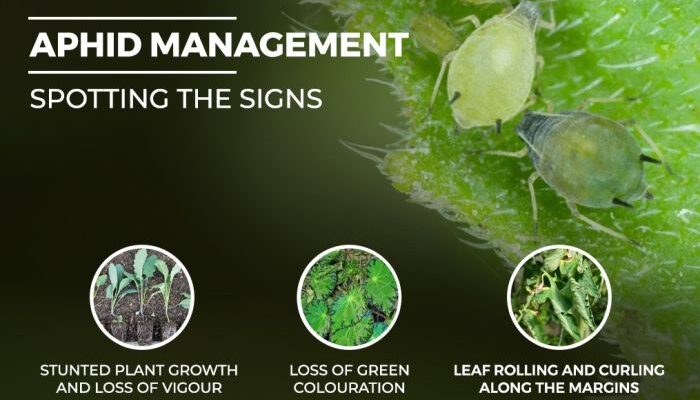Pest infestation remains an ongoing challenge for farmers affecting their productivity and profitability. It poses a persistent threat to crop yields and quality. Amongst many pest infestations, aphid infestation stands out as tiny, sap-sucking insects wreaking havoc on crops by spreading viral diseases. These pests compromise plant health, resulting in twisted and curled leaves, yellowed foliage, stunted growth, and even the demise of shoots. The prevalence of aphids in India has increased due to several factors, including favourable climatic conditions, intensive agricultural practices, and the widespread use of nitrogenous fertilisers. These factors create an environment conducive to aphid proliferation, making them a persistent threat to Indian farmers.
Aphids, typically ranging from 1 to 4mm in length, exhibit diverse colours, including green, red, brown, black, yellow, or white. Mature aphids may possess wings, while nymphs resemble smaller versions of adults. Aphids typically reside on the undersides of leaves, where they attach their mouthparts to the plant and extract sap. This feeding process not only damages the plant’s tissues but also weakens its overall health.
You may also like to read: UPL-Radicle Natural Plant Protection (NPP) Challenge reveals finalists competing for US$1.75M investment
Once aphids have been identified, farmers can implement a range of strategies to manage their populations. These strategies include:
- Balanced Fertilisation: Apply the recommended dosage of fertilisers. Caution should be exercised with nitrogenous fertilisers, as higher doses can make oilseed Brassica crops more susceptible to aphids.
- Natural Predators: Encourage natural enemies of aphids, such as lady beetles, lacewings, syrphid fly larvae, and parasitic wasps. Utilise safe chemistry pesticides that do not harm beneficial insects.
- Weed and Debris Management: Clear weeds and debris, as they serve as hiding places for aphids and other pests.
- Companion Plants: Interplant with companion plants like marigolds and lavender to naturally deter aphids and protect your garden.
- Water Stream Application: Use a strong stream of water to dislodge aphids from plants. This method is effective in washing off honeydew or sooty mold that may be present.
- Pruning: Prune-infested leaves and stems to reduce the aphid population and prevent the spread of disease.
- Safe Chemistry Insecticides: Consider using safe chemistry insecticides with translaminar activity if necessary. As aphids are present on the undersurface of leaves, choose chemistry that suits the specific requirements. Remember the aphid life cycle of 45-55 days when deciding on the number of sprays based on Economic Threshold Levels (ETL).
(To tackle the aphid infestation in crops, Corteva Agriscience issued these advisories)




